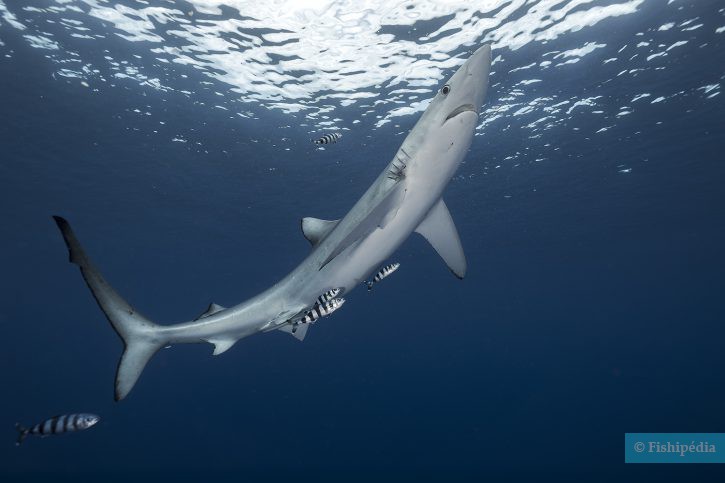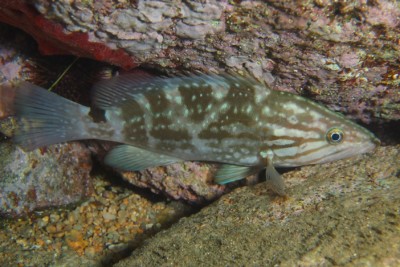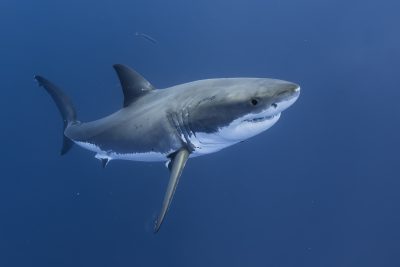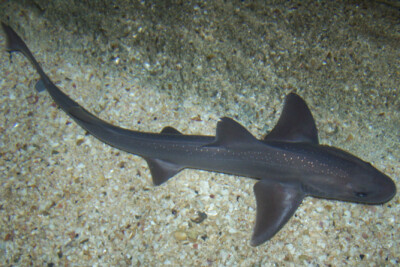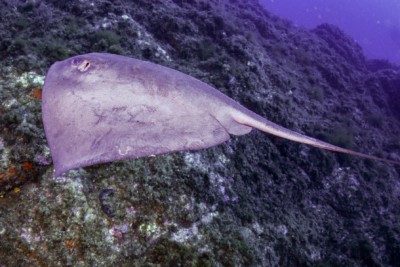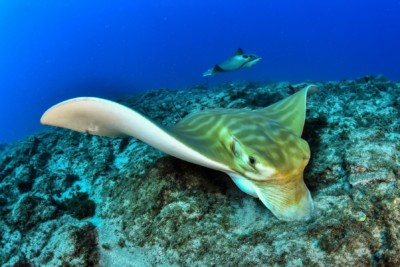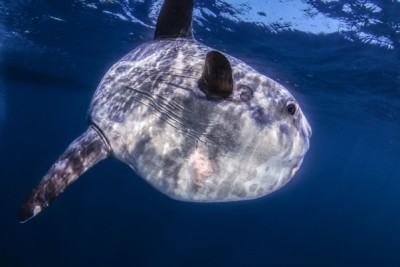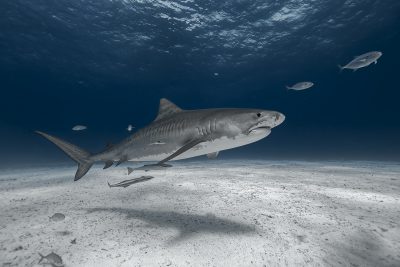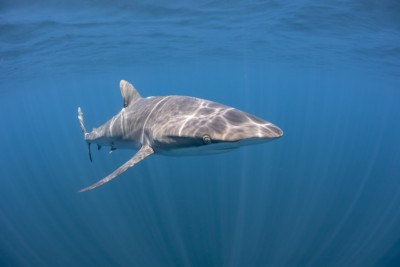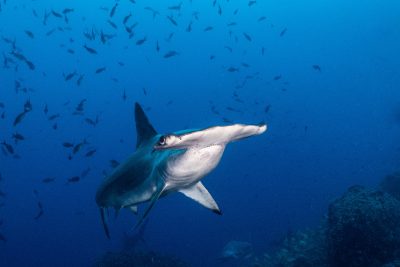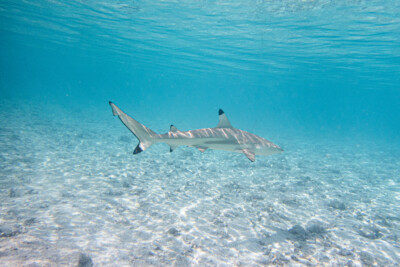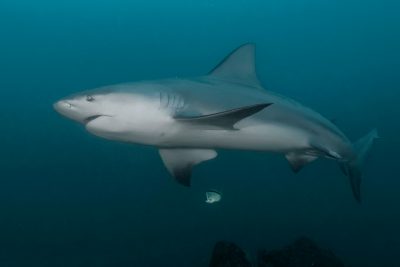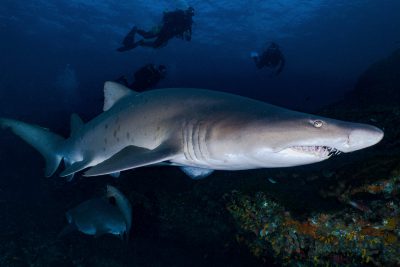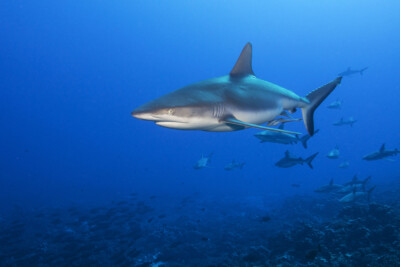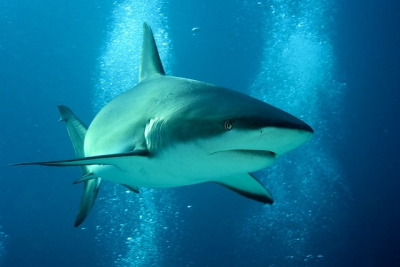blue shark
| Scientific name | Prionace glauca |
|---|---|
| Descriptor | Linnaeus |
| Year of description | 1758 |
| IUCN category (World) | NT |
| Family | Carcharhinidae |
| Genus | Prionace |
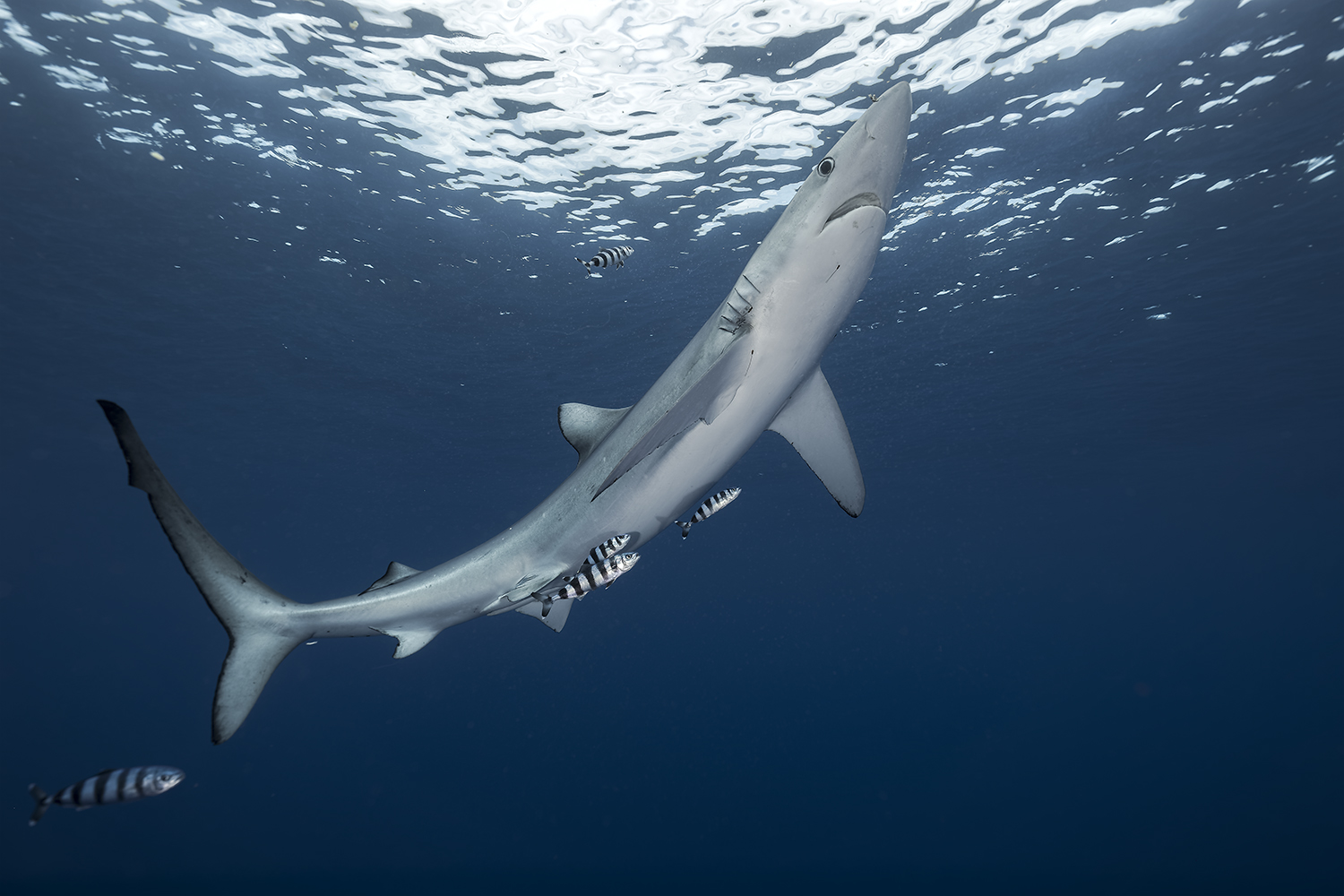

Introduction
The blue shark, sometimes also called the blue skin shark, is a pelagic fish found in most temperate and tropical marine waters.
Although rare, this shark is sometimes observed not far from the coast in the Mediterranean Sea. For example, a blue shark was observed two meters from the beach of Almanarre in Var on July 27, 2022.
Despite this wide distribution, the species is currently threatened by overfishing.
Who is it?
Morphology
-
Type
-
Average size335 cm
-
Maximum size400 cm
-
Longevity20 year
-
ShapeRectangular
-
Type
-
Average size335 cm
-
Maximum size400 cm
-
Longevity20 year
-
ShapeRectangular
How to recognize This fish ?
The blue skin shark has a blue back and white belly. The body is elongated, the pectoral fins are long and thin, and the first dorsal fin is short. The caudal fin is heterocercal with the lower part smaller than the upper part. A subterminal notch is found on the latter.
The snout is long and pointed, the teeth are narrow, long, and oblique. The lower jaw teeth are finer and smoother than those of the upper jaw.
Sexual dimorphism
The dimorphism of this species is well marked. The male has a pair of Pterygopodes, reproductive organs resulting from the modification of the pelvic fins, allowing fertilization of the female.
Behaviour & Life cycle
-
dietcarnivorous
-
Sociabilitysolitary
-
territorialNo
-
Way of livingdiurnal
The blue skin shark is a carnivorous predator with a lively temperament, living alone. This predator mainly feeds on small fish, mollusks, cephalopods, and occasionally birds.
Reproduction
The blue skin shark is a viviparous species that gives birth to up to 80 pups, each measuring 40 cm. Gestation lasts nearly a year.
Sexual maturity is reached at around 2.5m in size, corresponding to an age of 4-5 years.
Risks for humans
-
VenomousNo
-
BiteYes
The blue shark is not considered dangerous to humans. However, given its size and position in the food chain, it is recommended to avoid approaching it or even swimming near it.
Origin and distribution

Geographic distribution & Conservation
Knowledge about shark populations and their exploitation is imprecise. However, several indicators (decrease in catches, decrease in yields) paint a rather bleak picture of the state of their stocks, even if situations vary from one species to another... Learn more
Conservation status of populations (IUCN)
What is its habitat?
Natural environment characteristics
-
Temperature24 - 28 °C
-
Depth10 - 75 m
-
EnvironmentActive pelagic
Biotope presentation
This pelagic species makes rare visits to the coast. It spends most of its time in open water.
Species of the same biotope
To go further
Sources & Contributions
Participation & Validation
The Fishipedia team and specialist contributors are committed to providing high-quality content. However, although the information comes from scientific sources or testimonials from specialists, the cards may contain inaccuracies.

Adrien Falzon

Benoit Chartrer

Silvia Gomez
Translation
Translation done with the valuable contribution of our translators, who make this information available to a wider audience. We sincerely thank them for their commitment.
Scientific partners
Tags
#Carcharhinidae
#Prionace
#plein eau
#shark
#Bay of Bengal
#Gulf of Mexico
#Persian Gulf
#Great Barrier Reef
#mer d'Oman
#Ross Sea
#Tasman Sea
#mer de Weddell
#Philippine Sea
#Sea of Japan
#Labrador Sea
#Mediterranean Sea
#Black Sea
#Red Sea
#South East Asian Seas
#Indonesian seas
#Atlantic Ocean: North Coast of Brazil
#Océan Atlantique Est Afrique - Angulhas
#Océan Atlantique Est Afrique - Bengala
#Océan Atlantique Est Afrique - Golfe de guinée
#Temperate Eastern Atlantic Ocean
#Océan Atlantique Est Afrique - Transition & Cap Vert
#Eastern Cold Atlantic Ocean
#Gough Island
#Saint Helena
#Cold temperate Northwest Atlantic Ocean
#Northwest warm temperate Atlantic Ocean
#Southwest warm temperate Atlantic Ocean
#Eastern tropical Atlantic Ocean
#Southwest Tropical Atlantic Ocean
#western Indian Ocean
#Desventuradas Islands
#Galapagos
#Océan Pacifique Nord Est Tempere Chaud
#Océan Pacifique nord-est tempéré froid
#Océan Pacifique sud-est tempéré chaud
#Tropical Eastern Pacific
#Western Tropical Pacific Ocean
#Corsica
#Canary Islands
#Sardinia
#Sicily
Species of the same family
Species of the same biotope
